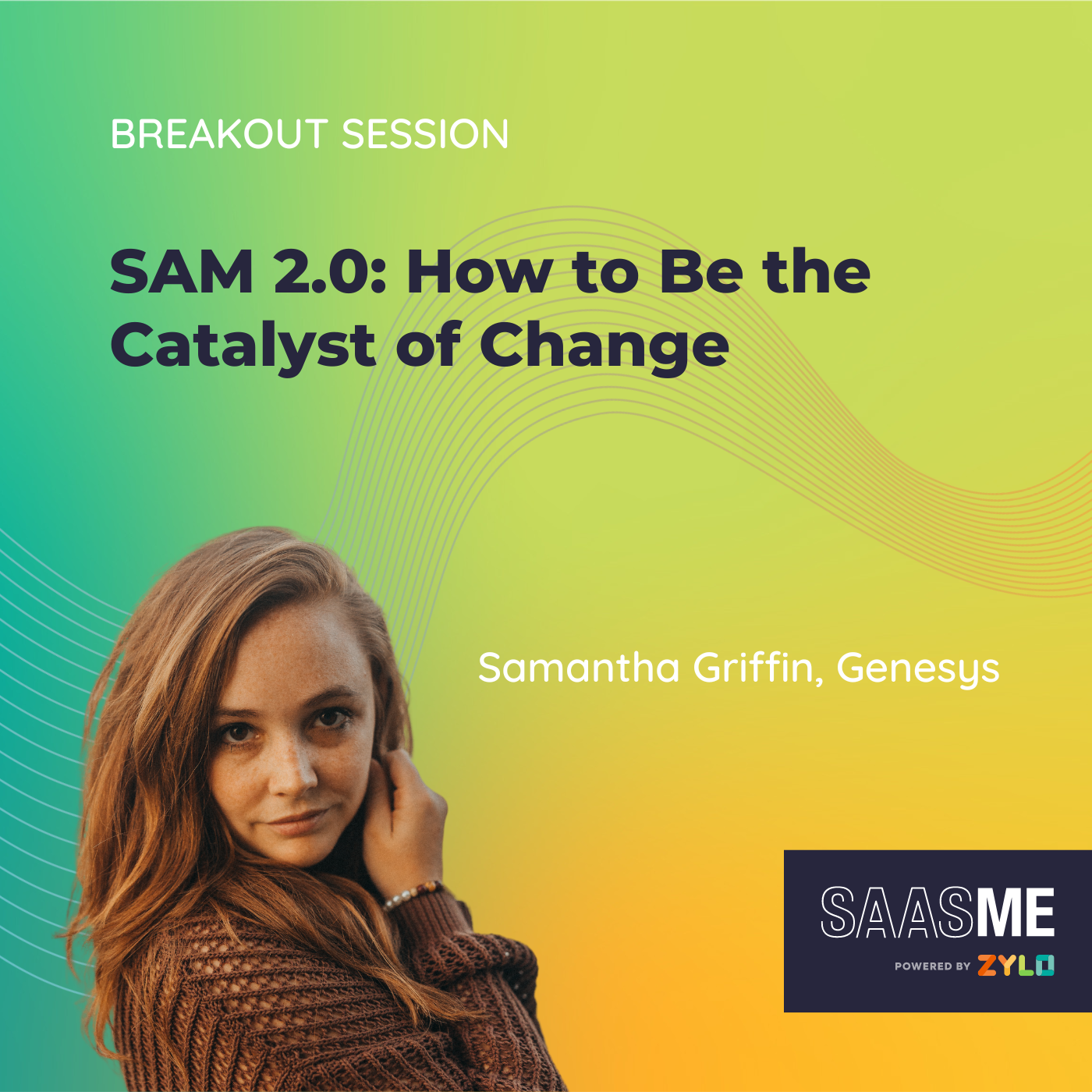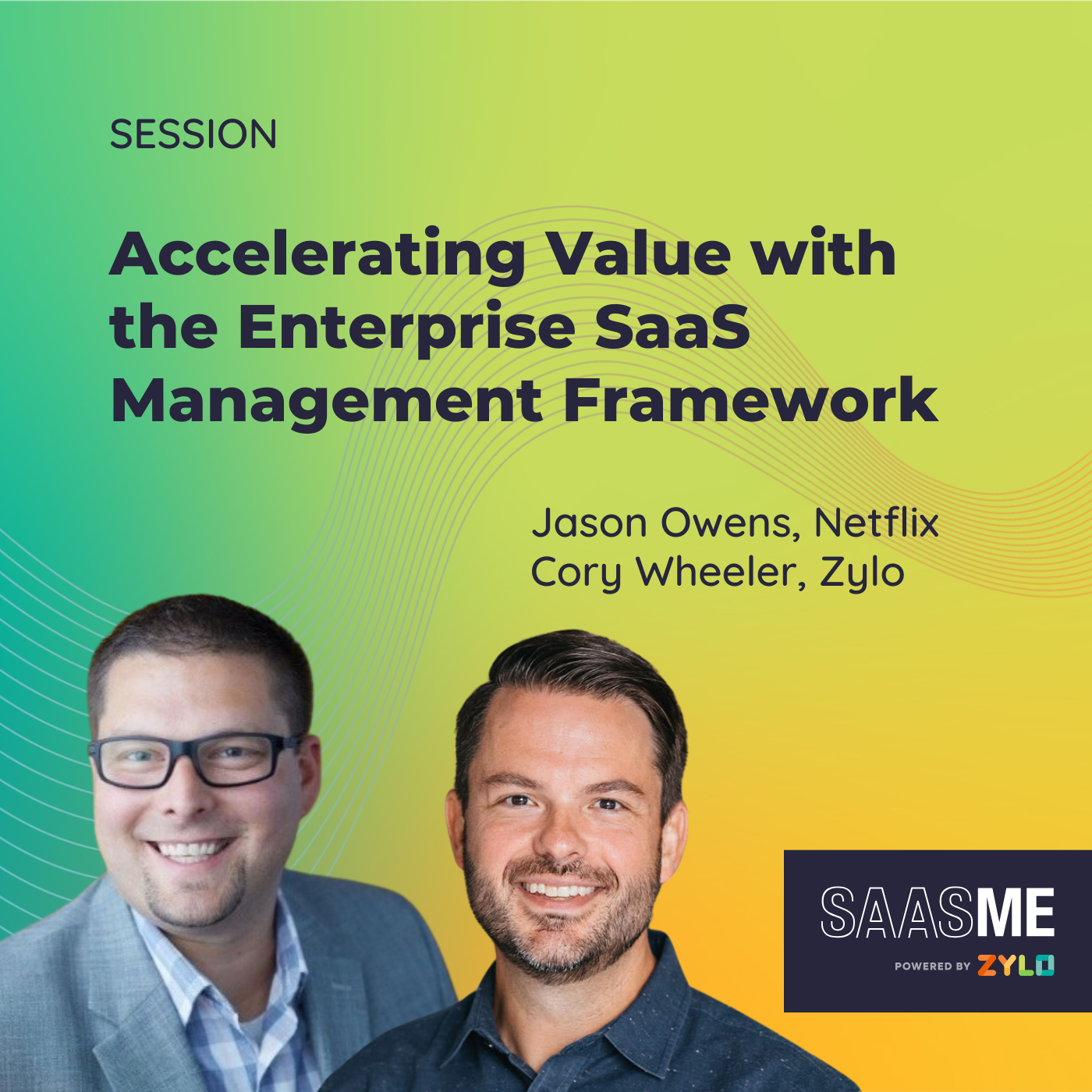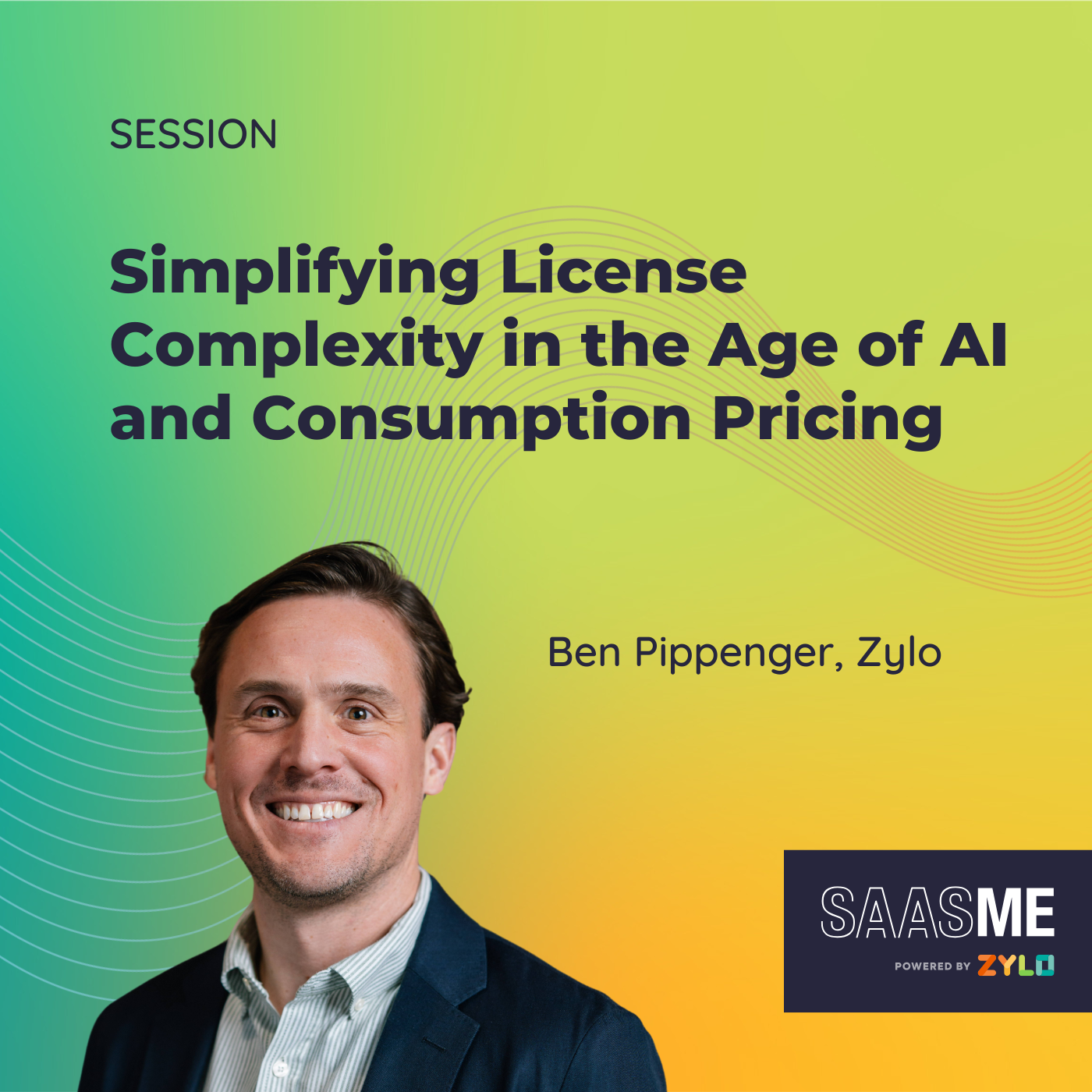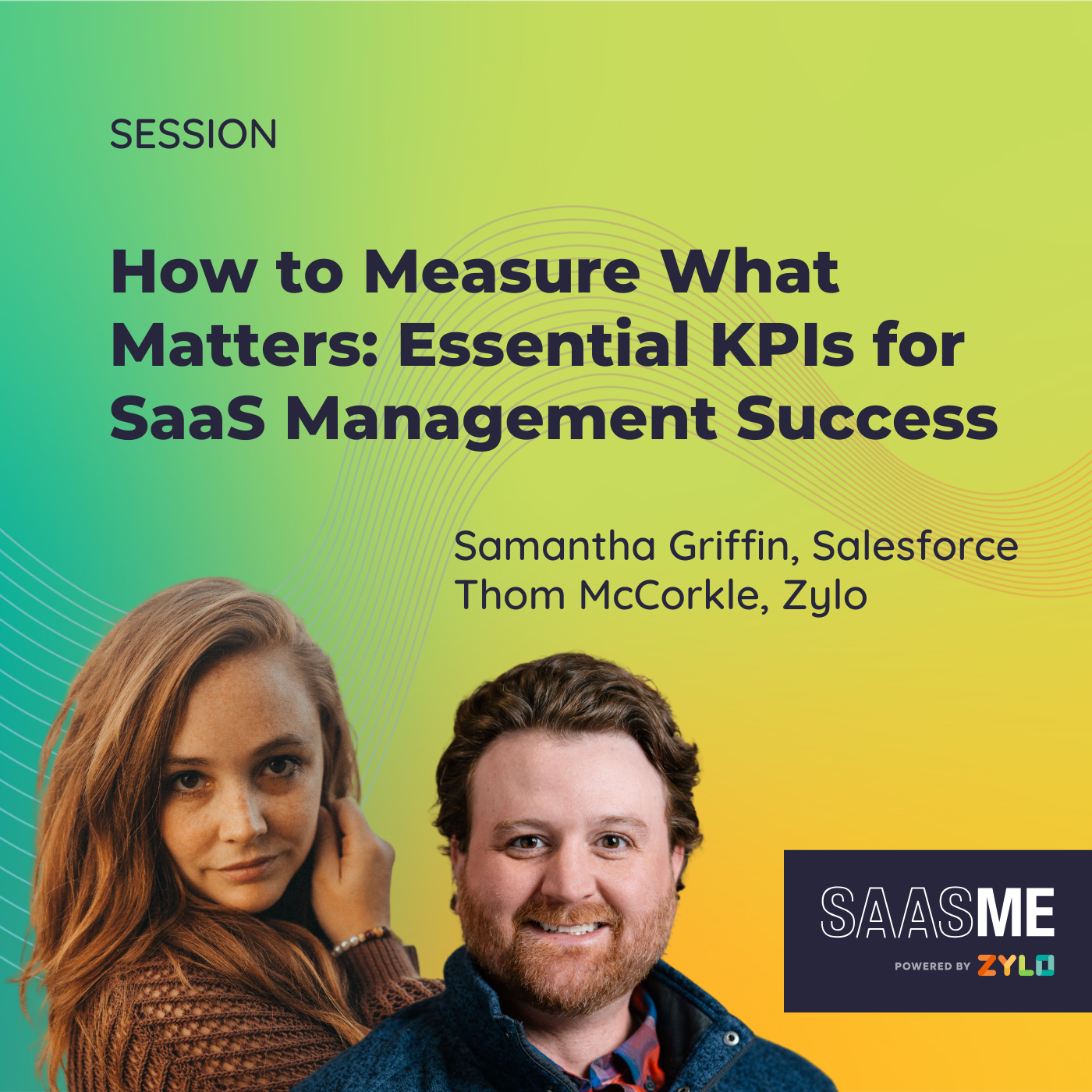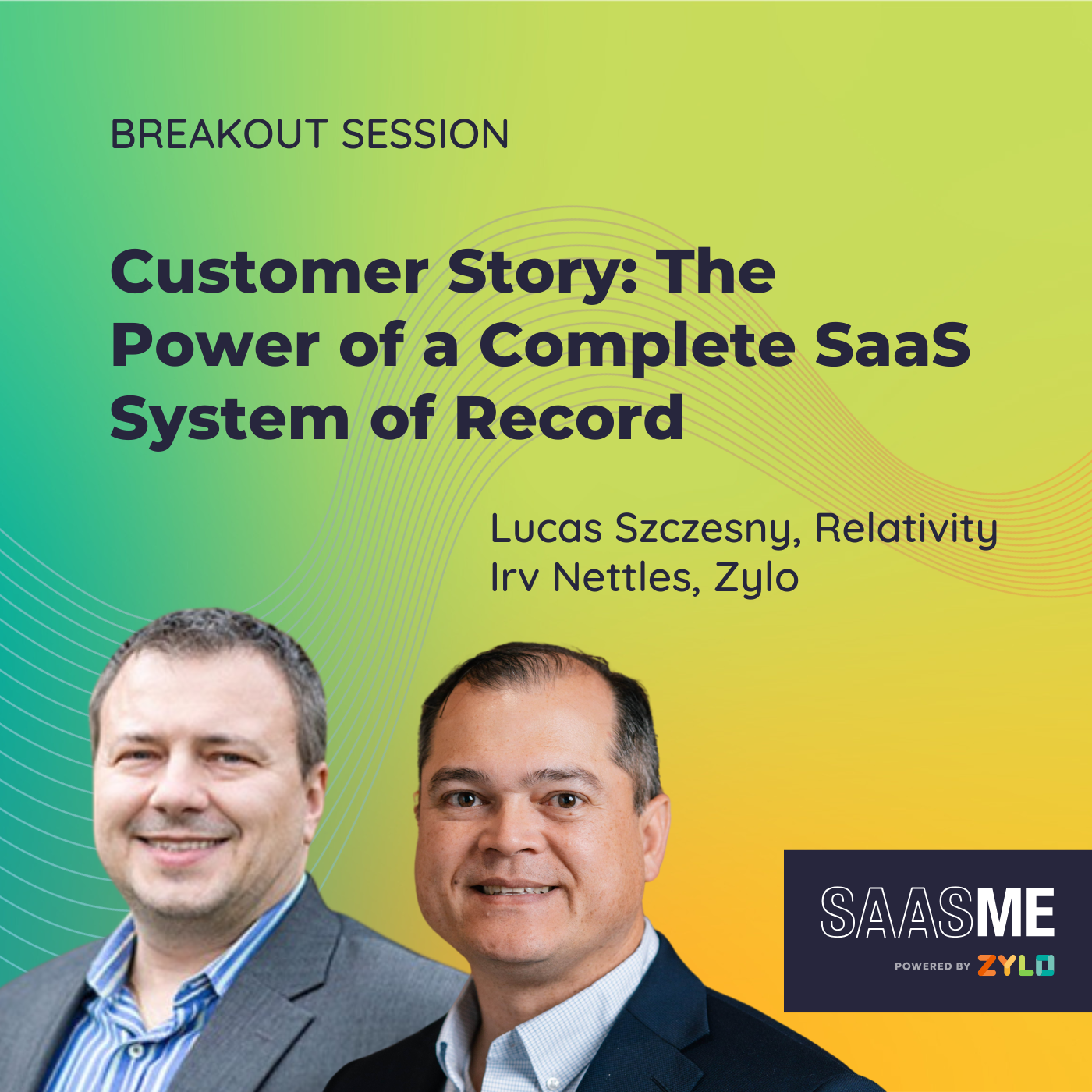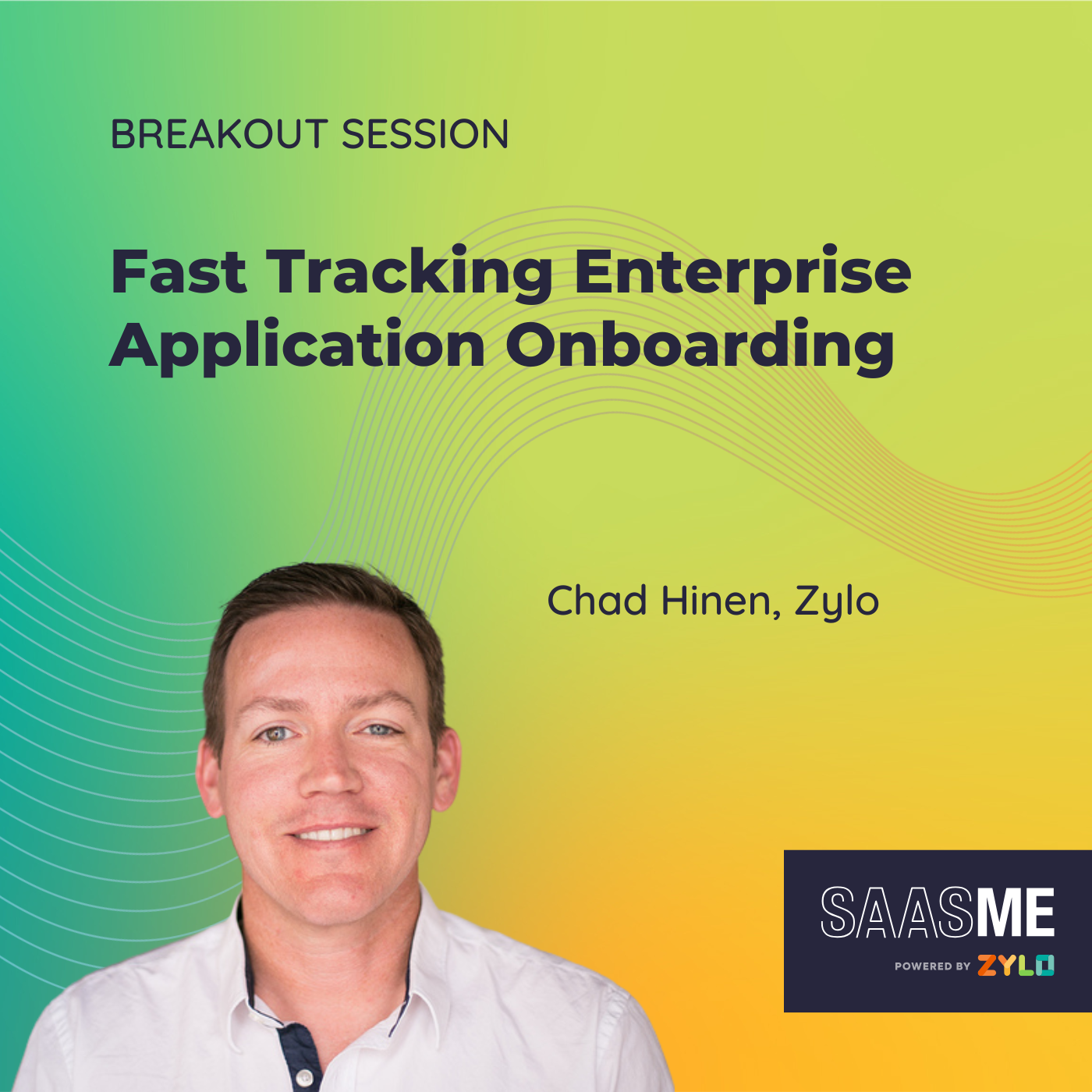SAM 2.0: How to Be the Catalyst of Change
- 0.5
- 1
- 1.25
- 1.5
- 1.75
- 2
Ryan Weggs: Hello, everyone. I hope you're enjoying SaaSMe24 as much as I am so far. My name is Ryan Weggs, strategic account executive here at Zylo. As we know, SaaS is on the rise, demanding a new type of software leader, the SAM 2. 0 change maker. It's time to elevate your SAM beyond spreadsheets, become the agent of change your organization needs. Learning how to build your internal brand, gain leadership trust, drive positive impact across the business, not just manage software. Really taking the reins and leading the way with SAM 2. 0. When we were looking for someone to discuss this topic, we could think of no one better than Samantha Griffin, senior software asset manager at Genesys. With that, I am very excited to turn the reins over to Sam so she can show us the way on how to become a catalyst of change. Sam, take it away.
Samantha Griffin: Thank you, Ryan. You can't really beat an introduction like that, so I guess I will go ahead and get to it. So, hey, everyone, my name is Samantha Griffin. I am the senior manager of software asset management here at Genesys in Indianapolis, Indiana. I will go ahead and walk you guys through the session agenda. We'll touch briefly on my career in SAM here at Genesys over the past eight years, how we're shifting our mindset from on- premises to SaaS, how we're getting alignment around executives and their expectations in the SAM 2.0, and then things that we can start doing today to elevate our internal brand in SAM career.
Samantha Griffin: I started at Genesys a little bit over eight years ago. I had a funky journey into software asset management. I started as one of our first AEs for our cloud- based lead offering and really cut my teeth on all things SaaS, SaaS licensing, learned a lot about different AE incentives, the discounting levers that are put in place for account executives and the sales teams and sales leadership organizations. Once I had a great amount of experience there, I moved over to our procurement team that was brand new to the organization. It was actually myself, one procurement ops person, and a meeting and events person under our VP of procurement at the time. So I got to see a lot of good and a lot of bad software renewals and software new acquisitions. And through that was made aware of some of the gaps I think that any organization would see around software licensing, auto- renewals, how CPIs and price increases are handled, and just ultimately how organizations are able to come in and divide and conquer with their sales strategies by reaching out to different stakeholders, executive leadership, and really trying to skirt procurement. And through that, we identified a true need for all things software asset management here at Genesys, which is where our program started.
Samantha Griffin: We also have had our fair share of unfortunate situations and audits that have driven additional alignment and executive leadership backing for our program. But through that, we've been able to get our hands around our software spend, what's actually in our environment and our organization and how we're looking to manage what we have to date and what's coming into our ecosystem moving forward. So it's been a great journey. I've learned a lot and we're nowhere near finished.
Samantha Griffin: And I want to start things out with shifting from kind of the old way of the world to the new way of the world, at least for how I see it and how we operate here at Genesys, the on-premises to Saas-based. 1.0. I mean, everything was very processed and structured. You had an understanding of what you needed to report on for an ELP, whether you were doing it on a monthly or a quarterly basis. You were probably hiring an IBM specialist, an Oracle specialist, a Microsoft specialist, and dedicating an entire headcount to it. There were a lot of eyes on audit defense and audit readiness, making sure that you were compliant 100% of the time and making sure that you had the right people in place to know that complex licensing structure. As we all know, they make it purposefully complex and difficult to learn and it's ever- changing. So a lot of focus just on what's the worst- case scenario and how can we have all of our ducks in a row, or at least all of our ducks in a pond to keep it from happening.
Samantha Griffin: Where we have arrived in the SAM 2.0, at least here at Genesys, is a lot of focus on collaborating on the fly. With on- premises, you knew who your stakeholders were. For both better and worse, everybody is a stakeholder in a world of SaaS. Most people have a corporate credit card, and if they don't, they still more than likely have the ability to expense things as they pay on their own credit cards or via cash. So the communication that you have with your end users is very important, and so is making sure that you're in the room for all of those conversations. I know a lot of us have been conditioned to update our iPhones and select yes to, "I've read the terms and conditions," and not read them, and trying to change the way of the world and the way that people think on the risks that they're accepting by clicking through terms and conditions and how they are always inherently in favor to the vendor is a difficult subject, and it's something that people's eyes glaze over on when you want to talk to them about it. So there's that piece of it. There's also, I want to focus on shelfware, and the one SKU methodology, which is what I tend to see a lot during our software purchases and renewals. If you're looking at vendors, I feel like they've either gone one of two ways. They are either consumption- based or they have one SKU to rule them all with different sets of permissioning, which makes it increasingly more difficult to figure out who your power users are, how you should be licensed, what should be a read versus a write user and what you should be paying. It's unfortunate to have to pay for your entire enterprise at a full license when you may have 250 power users and everybody else only needs just a basic read or write access. In addition to that, you've got rapid deployment being kind of the status quo for all things SaaS- based, and not everybody as educated as they could or should be on multi- factor authentication, SSO, things of that nature, and also not aware of the cost implications that come along with it. Unfortunately, when you are driving changes around what risks your organization is willing to tolerate, a very simple, " Well, this is a$ 250 a year expense for my entire team of 10, and it's a very valuable application," turns into, " This vendor has a set minimum of$15, 000 plus implementation fees in order to get those key features and key InfoSec controls that are necessary to operate in an enterprise environment." So that's just kind of the base level of SAM 2. O and SaaS here at Genesys.
Samantha Griffin: Next, I wanted to touch briefly on how to align with executive expectations and what that can realistically look like in the day-to-day. Overall, what I've found is there's a lack of understanding of what software asset management is, and it's not that people don't understand the basic functionality of it, but a lot of previous work had always gone unseen, especially from an executive leadership standpoint. Nobody really cares about the money that you're saving by re-harvesting one or two licenses upon termination or with turnover. Nobody is thanking you for the audits that you've effectively avoided and the money saved when everything is going right. So making sure that the brand is there and that there's an understanding of not only the small values and the everyday work that software asset management can provide, but also of the overarching infrastructure that software asset management is able to put into place, and the tight alignment with your finance, your enterprise architecture, your InfoSec, your sourcing, and how it all molds together. With that comes building trust with leadership. Knowing what language to be speaking to them, I think is inherently helpful there. And effectively telling a story that resonates with them. If you're going and you're pitching something, you want to be certain that it's something that is even on the radar for this fiscal year. I am always surprised at how many people, even though most organizations have documented goals or documented plans on a page, are just completely out of lock- sync with what their VPs, their SVPs and their C- suite are looking to accomplish over the next 12 to 24 months.
Samantha Griffin: So with that, in the SAM 1.0, or at least at the beginning stages of software asset management at Genesys over our first couple of years going into maturity, what we focused on was don't be high conflict. Let's try to save as much money as we can, and let's not start a bunch of fights. Nobody really likes application rationalization. Unfortunately for everybody else, we're the ones who get to do it and get to have those hard conversations. So why not start with the easy applications where you can go in and swoop and save 10,000, 15,000, $20,000 and say, " Look at all of the value I've created in just a couple of weeks." That, and being able to just answer the question of why are we going back to the vendor and buying 20 more licenses, how is this needed, who needs it, why is it needed, and why does it make sense to do it right now, helped us build a baseline of trust in the SAM 1.0. But moving forward, what we're looking to do and what we've been doing for the past 12 or so months is making sure that we're not only aligned with senior leadership, but our org level leaders. Getting into the weeds with our directors, our senior directors, and even our senior managers of what applications are you using and what is your specific use case? To be specific, I feel like whiteboarding is a big question mark for many organizations right now. There's a lot of great tools that do it, and there's a lot of use cases around it. We had a number of power users with whiteboarding in our organization who had such a specific use case that I had never been seen used for the tool before that if we would've went straight into application rationalization and said, " Okay, this checks the box here, here, and here, let's go ahead and move everybody over and export all of their whiteboards," it wouldn't have worked and it would've caused an uproar and a very large conflict. So getting in at the ground level and having those candid conversations and just being the question asker, the very curious person in the room, is never a bad thing for a software asset management. It always comes across as a better brand builder than just bringing in, swooping in your machete and trying to take people's toys away. Making sure that you're able to effectively at least have or exude an executive presence. I always hesitate to say executive presence because I think it gets misconstrued a lot of the time with the old school way of thinking and what leadership used to be and who it should be. But being able to speak clearly and concisely to the goals and being able to just say, " Hey, I'm able to save X amount of dollars. I'm able to organize our tech stack in a way that makes sense and gives us a lot of purchasing power," there's not a lot of executives, at least that I'm aware of, CIOs and CFOs, that are going to say, " No, I don't want you to save me money, and I don't want things to be easier for our end users to navigate." So being able to just speak at that high level, it pays off infinitely. Culture shift in transition plans. I think this is one of the trickier parts of SAM 2.0. And it's all the detailed, meticulous, very boring planning of how do I get all of your data that lives here over into this other area? How am I going to make sure that all of our end users are trained? Do we have to pay for additional professional services, for additional consulting? How do I make sure that this move, if we are going to make one and force people out of their comfort zones, is as easy as possible and making sure that you're the steward of that and able to speak to it. And then everybody wants a flat budget, I know especially in IT where a lot of software budgets tend to land. So being able to speak to what has to happen for those budgets to remain flat, whether it's spend caps on CPIs or it's appropriate forecasting for head count and growth, making sure that you are involved in those conversations at budgeting the year prior. So that way you know if you do have a project management tool that is enterprise wide that's going to be renewing, and you have a proposed head count increase of 7% in your next fiscal year, that that's planned for and budgeted for and accounted for in all of your negotiations, at least 90 days, hopefully 120 days prior to renewal.
Samantha Griffin: And I touched on it lightly in the previous slide, but being able to be a good storyteller is always going to be valuable to the brand. While it's great to save money with software asset management, and it was definitely an initiative of ours for the first couple of years that we were getting up and running, is we want to be cost neutral, we want to save money via license reclamation and re- harvesting and application rationalization, I think there's a bigger conversation that should and will happen that lets everybody know that software asset management, and especially application rationalization, is not always cost neutral. In order to make changes that make sense for the organization, it may not cost less to move everybody over to a more strategic and a more heavy hitting tool. Actionable data. I mean, that's just common sense, right? Make sure that whenever you are in those rooms presenting your three and four slides on what you can do and the change that you can make is backed up by data that you can pivot to very quickly and very efficiently. And everything is not all or nothing. Everything is dependent on internal processes. What we've been working on on the Genesys side of the house is who should be paying for software? Who should be our decision makers for software? Should there be a governance council? And if so, who should be involved? It's different than how we've ever looked at it before. We definitely don't want to just go in and take everybody's budgets away and say, " You don't get to be in charge of your tools anymore." But in order to effectively admin and manage every application in the ecosystem, who should have a budget and should we focus on cross- charge and back- charge? And if not, how should it operate and do we need tools to be able to do that effectively?
Samantha Griffin: So three things I think that we can definitely start doing today. Engage with your senior leadership in a thoughtful way.
Samantha Griffin: So referring to what we call them at Genesys as the plan on the page. I know all of my senior leadership's goals for the next 12 months, and I want to tie every initiative that I'm doing from a software asset management perspective in one way or another back to that goal. Educating yourself on AI. It's, I think, the most obvious thing that we could touch on today, this week, this month, this year. Making sure that you're educated on all things AI, how your users may be leveraging it in tools that have just gone and automatically rolled out those updates and you didn't even know about it. New AI requests that are coming in, do you have a way to track those? Is somebody tracking them? Are you asking for things like to opt out of abuse monitoring or to opt in for AI when and if it is available? And do you have an amendment set up for your MSAs or your ordering documents to make sure that those things are accounted for and that your data is not just floating around? And then I would say also partnering with your InfoSec team and leaning heavily into multi- factor authentication. We have great partnerships with sourcing. We have great partnerships with EA. But I think really building the bridge between InfoSec, aligning with their goals and making sure that everybody is on board with the understanding of why is multi- factor authentication important, what value can it bring, and do we know that that increases the bottom line or the pricing that is involved with these applications in an enterprise organization? Those three things, I think, bundled together, it makes things a lot more seamless, and it also, at least from a Genesys perspective, it's giving us the power.
Samantha Griffin: We typically have been divided and conquered by salespeople, by people just coming in and selling us a tool to one part of the organization. And we're not taking into consideration whether or not it can apply to the entire enterprise. And I'm not asking to be the 800 pound gorilla with our spend. I don't think we are, but I don't think we're the capuchin monkey either. So being able to actually say, " We've got everybody in the organization aligned. We need this tool for this purpose, and we're going to dedicate a good amount of dollars to this purchase in a very organized manner," it packs a punch and it gives you better InfoSec, it gives you better total admin privileges. It gives you better discounting, it gives you more leverage overall, and it's easier to manage from a SAM perspective. And I think that's all I've got and I'm at time.
Samantha Griffin: So thanks, guys, for joining me today. Please feel free to connect with me if you have any questions or you just want to chat.
DESCRIPTION
SaaS is on the rise, demanding a new type of software leader: the SAM 2.0 changemaker. It's time to elevate your SAM beyond spreadsheets and become the change agent your organization needs. Learn how to build your internal brand, gain leadership trust, and drive positive impact across the business. Don't just manage software. Take the reins and lead the way with SAM 2.0.
Speaker: Samantha Griffin, Senior Manager, Software Asset Management at Genesys

